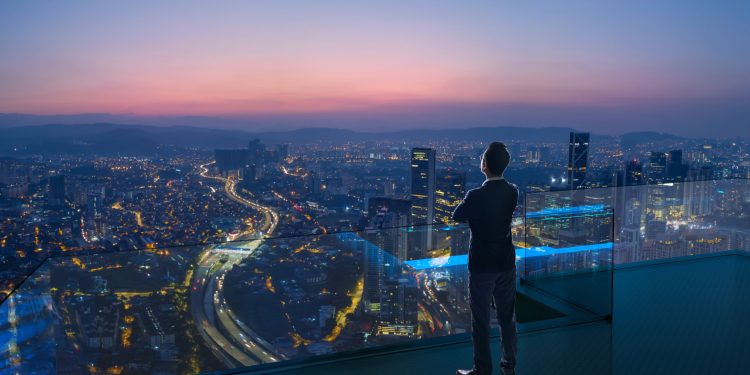In the Kingdom of Saudi Arabia, a new chapter in urban development is unfolding, marked by substantial growth and unparalleled creativity. This surge is most apparent in the realm of urban planning, where the Kingdom has become a magnet for global talent and groundbreaking projects. Landmark proposals such as The Line in NEOM, The Mukaab, and the towering 2km high skyscraper in Riyadh underscore the remarkable innovation shaping the country’s architectural and urban planning landscape.
Despite these advances, traditional views of architecture often perpetuate a false dichotomy between nature and culture. The conventional belief that cities are separate from the natural environment, and that nature exists merely to serve and remediate urban excesses, persists. It’s a perspective that’s increasingly challenged by the urgent demands of the climate crisis.
Addressing climate change requires a fundamental shift in how we conceptualize urban and landscape design. By adopting an ecological perspective, we can begin to integrate cities into the fabric of a new ecological landscape. This shift has been gaining momentum over the past two decades, with landscape architectural discourse leading the way and finding resonance in the arts through the works of visionaries like Donna Haraway, Ilkka Halso, and Patricia Puccini.
In Saudi Arabia, the creative boom has catalyzed a focus on regenerative development strategies. This approach extends beyond minimizing harm—as aimed by certifications like LEED, BREEAM, and Mostadam—to actively improving ecological health. Developers such as The Red Sea and NEOM are exploring methods to enhance the ecological vitality of their projects.
The goal is to account for the full environmental impact of development, including carbon emissions and the demands on energy, water, food, and materials. Then, to not only offset these impacts but to provide additional benefits for ecosystem services and biodiversity. Through such practices, cities can transition from being perceived as culprits of climate change to becoming part of the solution.
Green finance is emerging as a pivotal force in this transformation within the Kingdom. By leveraging climate finance, green bonds, and carbon credits, urban development can become both sustainable and economically viable. The Public Investment Fund (PIF) has established a center of excellence in green finance, exploring these concepts for its projects. The securing of significant green financing from banks is indicative of the burgeoning $27 trillion green finance market focused on climate change mitigation and reversal.
This vision of using urbanism to combat climate change is not only shaping Gensler’s future endeavors in Saudi Arabia but has the potential to influence global practices in urban development.


